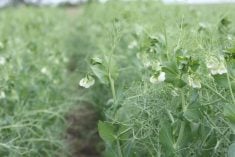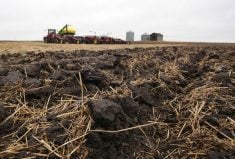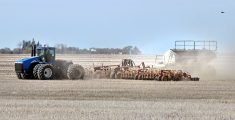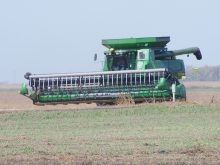New initiative includes recommendations on investment in research and incentives for beneficial management practices
Grain Growers of Canada plans to push for sensible government policies around crop production and climate change.
On March 28, the organization unveiled The Road to 2050, an initiative in which farmers will guide government programming to cut greenhouse gas emissions from crop production. Grain Growers is partnering with SaskWheat to develop the initiative.
“We need to be at the table…. We need to be providing some real, data-driven solutions that are good for farmers, are practical, that are not going to have negative economic consequences on our farms,” said Branden Leslie, manager, policy and government relations with the Grain Growers.
Read Also

Why feds imposed EV tariffs
Moe and Kinew have a fight on their hands when it comes to eliminating the EV tariff. Canada has to worry about pissing off the U.S. and Mexico and hundreds of thousands of auto workers.
Last summer, the federal government passed legislation called the Net-Zero Emissions Accountability Act. It creates the legislative framework for Canada to achieve net zero emissions by 2050.
“(It creates) a legally binding process to set five-year national emissions-reduction targets as well as develop credible, science-based emissions-reduction plans to achieve each target,” a federal government website states.
It’s unlikely that a new government would repeal such legislation. So, in November, directors of the Grain Growers had a lengthy conversation about this new legislative reality and how to respond.
“Our farmer directors led the conversation and realized there was a need to step up in this space,” Leslie said from Ottawa. “In terms of how we’re advocating to government and what we’re saying…. a lot of these policies are coming out of Ottawa and there is a real lack of understanding of what happens on farm.”
The discussions at a Grain Grower meeting last fall led to the development of The Road to 2050. The initiative isn’t about telling farmers what to do and how to reduce emissions.
It will provide recommendations to government on everything from investment in research to incentives for beneficial management practices.
“We need to guide them down a path that’s going to make sure we protect farmers’ profitability and simultaneously worked on those shared objectives of emissions reductions,” Leslie said.
The first step for the Grain Growers is to recruit a consultant, who will collect data, gather metrics and develop a draft document.
“It’s going to be a lengthy process, over many months,” Leslie said. “We don’t want to put together a two pager and say — here’s the areas they (government) should focus on.”
The federal government, though, has already made some programming decisions around grain production and greenhouse gas emissions. In February, Agriculture Canada announced $182 million in direct support to farmers to promote the use of things like cover crops and improved management of nitrogen fertilizer.
Those incentive programs are moving forward, but there’s still plenty of time for the Grain Growers to influence government policy on greenhouse gas emissions and crop production, Leslie said.
“When we look towards net zero by 2050, there’s a lot of years of programming and policy that is yet to come…. We know government is going to be seeking these ideas, to expand upon those existing programs.”
Also, the government may want to refine the current programs to reflect regional differences in climate, soils and crop production.
For now, the government has placed a large bet on cover crops, which are grown to improve soil health and add nutrients to the soil but aren’t typically harvested.
Leslie said the government is spending $110 million to promote cover crops, but they make more sense in warmer and wetter parts of Canada, like southern Ontario.
Semi-arid parts of Western Canada don’t receive enough rainfall or warm weather in the fall to support a cover crop after the main crop is harvested.
“It doesn’t apply everywhere,” Leslie said. “It’s critical that we lead this conversation (so) it’s not an Ottawa knows best, top-down approach.”
















